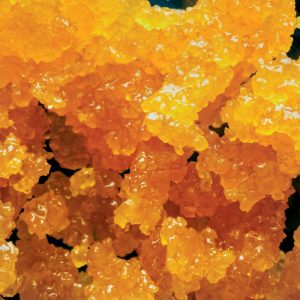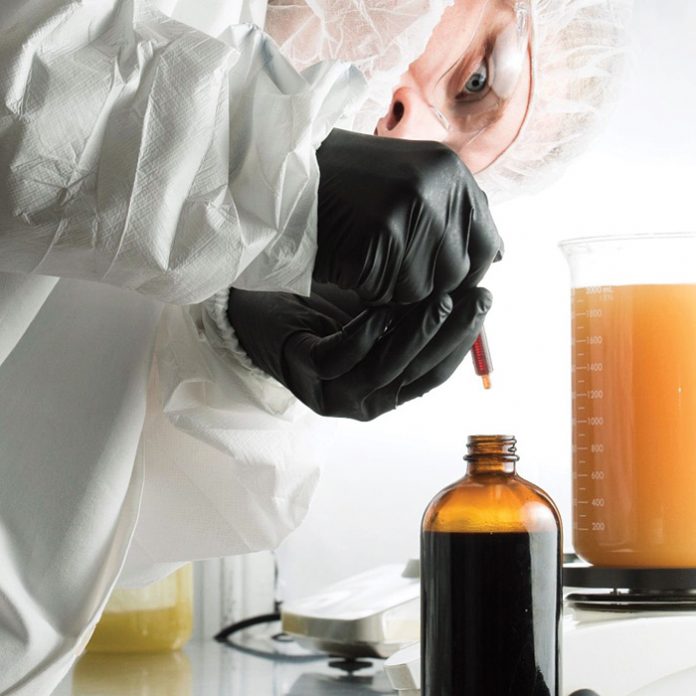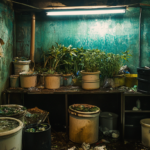By refining its own extracts, the edibles manufacturer hopes to refine the market, too.
Although known for crafting edibles, Oregon’s Lunchbox Alchemy defines itself more as an innovator than a manufacturer. The company attributes a big chunk of its success to research and development with a focus on sustainability.
 The company recently completed a 12,000-square-foot, purpose-built facility that allows for rapid, efficient production of extracts and edibles. One of the first structures of its kind in the state, the site houses manufacturing operations for Lunchbox Alchemy’s proprietary, full-spectrum cannabis oil.
The company recently completed a 12,000-square-foot, purpose-built facility that allows for rapid, efficient production of extracts and edibles. One of the first structures of its kind in the state, the site houses manufacturing operations for Lunchbox Alchemy’s proprietary, full-spectrum cannabis oil.
“We’ve expanded from a patient-based, Oregon medical marijuana provider to a multi-state, recreationally licensed cannabis company and have come a long way since our first legal cannabis sale in 2014,” said Sales Manager Holly Weig, noting the company expanded to California earlier this year.
According to Technical Director Julyn Andrews, “We craft HVET [high-viscosity ethanol tincture], a whole-plant extract utilizing 190-proof, food-grade ethanol as a solvent. Modeled after RSO [Rick Simpson Oil], HVET is all about delivering a concentrated, full-spectrum dose of all the cannabinoids and wonderful compounds within the cannabis flower that provide a wide array of benefits.”
Each extraction process starts with laboratory testing for pesticides, mold, and mildew, as well as a full cannabinoid and terpene profile. The team examines the size and condition of the trichomes in order to fully understand the state of each unique batch of cannabis. Then, they run multiple internal tests to determine stability, aroma, flavor, and potency. Once they’ve examined the material in detail, they tailor the extraction process for each batch.
The first step in extraction is to reintroduce moisture, using a giant humidor-like device, until the optimal level is reached. Then, large or dense buds are broken down by hand in order to expose the maximum amount of cannabinoids without the risk of extracting any undesirable compounds. The prepared material is loaded into custom-built extraction units and then frozen.
Custom machinery designed under Andrews’s guidance forms the heart of the company’s hydrocarbon extraction process. The equipment permits a level of control Andrews claims is “not presently seen elsewhere in the industry,” allowing for precise management of factors such as solvent temperature, solvent contact time, dewaxing temperature and duration, microfiltration, solvent recovery speed, and solvent regeneration and cleaning. The process uses a special blend of medical-grade N-butane and N-propane refined in-house to ensure no unidentified or undesirable compounds remain in the solvent.
 Once a batch of cannabis has been extracted into shatter, propane hash oil, and/or sugar wax, it is refined again by dissolving the extract in 200-proof ethanol and then freezing the solution below zero degrees, thereby separating impurities like plant cellulose from the mixture. Once returned to a liquid state, the solution is filtered and the ethanol evaporated, leaving only refined, whole-plant extract. Finally, the refined extract is placed in a vacuum oven where THCA is decarboxylated to THC. The process is complicated and time-consuming, but Andrews said it’s what sets the product apart from others on the market.
Once a batch of cannabis has been extracted into shatter, propane hash oil, and/or sugar wax, it is refined again by dissolving the extract in 200-proof ethanol and then freezing the solution below zero degrees, thereby separating impurities like plant cellulose from the mixture. Once returned to a liquid state, the solution is filtered and the ethanol evaporated, leaving only refined, whole-plant extract. Finally, the refined extract is placed in a vacuum oven where THCA is decarboxylated to THC. The process is complicated and time-consuming, but Andrews said it’s what sets the product apart from others on the market.
Lunchbox Alchemy plans to expand its product line to include tinctures, topicals, and the capsules, all of which will be produced in the new facility and distributed from a licensed wholesale warehouse the company also owns.
The company’s pursuit of recognition doesn’t end with its products. Creative Director Carlos Perez said Lunchbox Alchemy also endeavors to set itself apart with uncommon branding and packaging. “Lunchbox Alchemy, as a brand, is unique in that it doesn’t evoke or utilize imagery or themes typical to cannabis—no green, no Rasta stripes, no tie-dye,” he said. The corporate color scheme is “bright purple and just loud enough to get the job done while remaining clean and simple.”
Perez said consumer feedback has helped the company create packaging that provides valuable information about the product inside. Total terpene and cannabinoid content and cultivar identification are prominently displayed on the front of each package, with the interior displaying an in-depth chart that reveals the five most prevalent terpenes found in the extract. Additionally, complete cannabinoid and terpene profiles for all extracts are available on the company’s website. “We’re also proud of the fact that all of our new extract packaging is made from post-consumer material and printed with plant-based dyes,” Perez said.
From the beginning, Lunchbox Alchemy has pursued a corporate vision and planned for longevity. The focus has served the company well and given the management team perspective for advice to others.
“Stick with a plan and stay focused,” Weig said. “Be aware of the tumultuous and ever-changing market, as this industry is rapidly evolving all the time. Develop standard operating procedures you can rely on to keep your business running smoothly and update them often to reflect your growth. Construct a brand that would stand out in any marketplace, not just the cannabis industry.
“Sophistication is never punished,” she added. “We are all crafters of the new global cannabis culture.”












